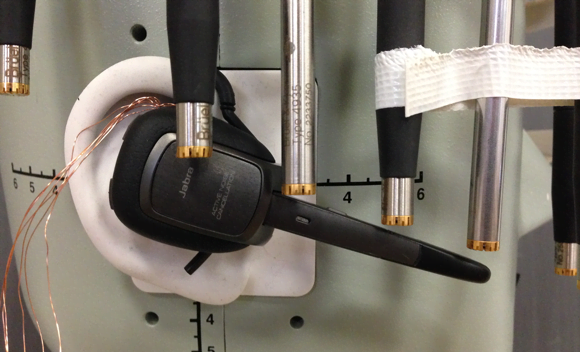To pinpoint our voices in noisy environments, modern telecommunication devices use multiple microphones and algorithms to process the signals. Factors like the time difference between the signals allow the location of their origin to be triangulated. As designers continually refine these algorithms, evaluating them requires more realistic, spatially accurate reproduction of background noise, to create reflective test conditions.

HEAD AND TORSO SIMULATORS
HOA optimizes the reproduced sound at a sweet spot in the centre of the array with the radius determined by a spherical microphone array, which is used to derive the spherical harmonics decomposition of the reference sound. The four-loudspeaker-based method equalizes the magnitude response at the ears of a head and torso simulator (HATS) for sound reproduction, while the matrix inversion method optimizes the local sound field around a few target positions.
This whitepaper documents an investigation contrasting the following five methods for the reproduction of background noise:
- ETSI EG 202 396-1
- Higher-order ambisonics
- Matrix inversion method
- ETSI TS 103 224
- Matrix inversion method optimized for a specific device
For each method, the quality of the reproduced sound was evaluated both objectively and subjectively, at microphones close to a device under test and at the ears of the HATS. A listening experiment evaluated the perceived quality of the sounds at points where telecommunication devices would be placed, around the head.
Download whitepaper: Simulation of realistic background noise using multiple speakers (PDF)

Abonnez-vous à notre Newsletter et recevez les dernières actualités en acoustique et vibrations


